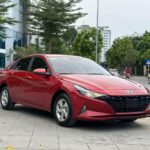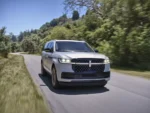Take a ride on an Elantra and you’ll be impressed by its smooth ride and nimble handling. With a spacious and solid cabin packed with countless safety features, it’s undeniable that the Elantra is a formidable competitor in its segment.
>> Leaked photos of the 2013 Hyundai Elantra before its launch
The Hyundai Elantra made its debut in 1990 as a compact and agile car designed with efficiency in mind. At that time, Hyundai needed a sedan that could directly compete with the Honda Civic and Toyota Corolla, two imported rivals that were quickly becoming stars on the streets of South Korea.
The Hyundai Elantra was introduced as an affordable and economical car. However, it seems that the engineers at the Korean automaker misunderstood the purpose and approach when they produced a car of inferior quality. Over the years, the Elantra has tried step by step to escape the death trap that Hyundai dug for itself because of reliability and style issues with a very affordable price.
Not starting off on the right foot, but that’s not enough to make Koreans worried. They were right not to be discouraged by the failure, as two decades later, the Elantra became the segment leader in terms of reliability, comfortable performance, beautiful design, and a long list of standard features.
The past shortcomings are undeniable, however, the excellent value of recent Elantra models turns those past shortcomings into meaninglessness. If you are looking for an affordable compact sedan, the Hyundai Elantra deserves to be on your consideration list.
First Generation (1990 – 1995)
The first-generation Elantra with code name J1 was powered by a 1.6-liter 4-cylinder Mitsubishi engine producing 113 horsepower at 6000 rpm and accelerating from 0-97 km/h in 9.5 seconds. The car can reach a top speed of 187 km/h and consumes 10.7 liters/100 km when driving in the city. Shortly after, Hyundai decided to increase the engine capacity to 1.8 liters (124 horsepower) and came with a 4-speed automatic or 5-speed manual transmission.
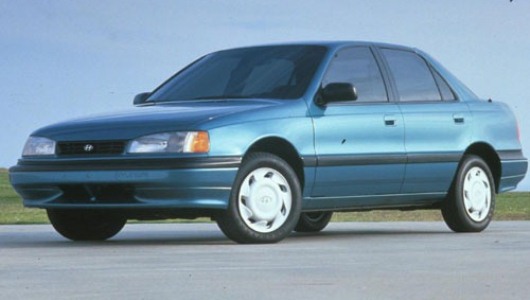 Sedan Hyundai Elantra GLS 1992
Sedan Hyundai Elantra GLS 1992
In 1994, the Elantra was upgraded with ABS brakes, airbags, power mirrors, and fog lights. However, these changes did not do much to alleviate the strong criticism aimed at the Elantra for its poor performance, underpowered engine, and dull handling. Hyundai’s plan for an affordable car unfortunately turned into a “much too cheap” car.
Second Generation (1996-2000)
Introduced in 1995, the second-generation Elantra (code name RD or J2) appeared in the form of a sedan and station wagon. In the Korean market, it is the “Hyundai Avante” sedan or “Avante Touring” wagon. Some export markets such as Australia and Europe received a series of models called the “Hyundai Lantra”.
Sedan Hyundai Elantra GLS 1998
The next generation Elantra, although improved over the embarrassing predecessor, is still a car that doesn’t suit many people’s tastes. Both the sedan and wagon versions were equipped with new engine options including a 4-cylinder inline 1.5-liter gasoline engine (82 horsepower), 1.8 liters (127 horsepower), and a 1.5-liter lean-burn gasoline engine (89 horsepower). Airbags were also added to the safety features.
Hyundai Elantra/Lantra received new grilles in 1998, 1999 along with a more powerful 2.0-liter engine.
Overall, the second-generation Elantra represents a fairly solid buying option in the affordable car segment. It may not be polished like the products from Honda, Nissan, and Toyota, but it is well-equipped and provides a relatively pleasant driving experience.
Third Generation (2000 – 2006)
The third-generation Elantra was produced for the model years from 2001 to 2006 and introduced a significant improvement over its predecessors. The larger Elantra sedan from the inside out and the modified sheet metal give it a more upscale look. Reliability and overall quality have also been greatly improved. The list of standard features is quite generous compared to the price of the car, including conveniences such as air conditioning, power accessories, side airbags, 15-inch wheels, and a cassette/AM/FM stereo system. The 2.0-liter engine produces 135 horsepower (increased to 138 horsepower after 2003) and is coupled with a 5-speed manual transmission or 4-speed automatic transmission.
Sedan Hyundai Elantra GLS 2002
Hatchback Elantra, Elantra GT was also started in 2002 and comes with additional standard features including leather seats and a CD player. Initially, the sedan was only available with the base GLS version, but from 2003, customers buying the Elantra sedan had two versions to choose from: GLS and the higher-end GT version. Although it lacks the finesse of the top products in the segment like the Honda Civic, the third-generation Hyundai Elantra has shone as a solid option for customers looking for maximum value for their money.
Fourth Generation (2006-2010)
The fourth-generation Elantra sedan redesign was first unveiled to the public at the 2006 New York Auto Show and was produced for the 2007 model year. Setting the Elantra as a mainstream candidate in the compact segment with its predecessor, Hyundai updated the Elantra’s style, improved driving quality and handling, as well as “upgraded” the interior to almost the maximum degree.
Sedan Hyundai Elantra GLS 2008
The Elantra sedan offers two main versions: GLS and SE. The GLS is reasonably well-equipped though it lacks traction control and stability control. Later on, these devices became standard on the SE after 2007. The SE also has more features and a sport-tuned suspension. During the years of the third-generation model, there is sometimes the word Elantra Limited or Elantra Blue – models that Hyundai released only in 2007 and 2010.
The fourth-generation Elantra is equipped with a 4-cylinder 2.0-liter engine that can produce 138 horsepower and is paired with a 6-speed manual transmission or an optional 6-speed automatic transmission. GLS models offer a standard 6-speed manual transmission and optional 6-speed automatic transmission, while the Limited version chooses an automatic transmission as standard equipment.
The Elantra sold in California or states with similar emission standards as California had to be a SULEV/PZEV-certified model, so the power was reduced to 145 horsepower and torque to 176 Nm.
Fifth Generation (2010 – present)
The fifth-generation Elantra and also the current generation made its first appearance at the Busan International Auto Show under the domestic name “Avante” and code MD in April 2010. The car produced for the 2011 model year was completely redesigned with an attractive look, new features, and of course, undeniable power.
The Elantra sedan is offered in two versions: GLS and Limited. The GLS comes with 15-inch wheels, air conditioning, heated mirrors, full power accessories, and a 6-speaker sound system with iPod/USB interface. Options include alloy wheels, fog lights and heated front seats.
And a perfect 2013 Hyundai Elantra
The Limited version upgrades with standard equipment such as alloy wheels, a sunroof, leather heated seats, and a range of options including keyless entry, satellite navigation, a rearview camera, and a premium sound system.
Power for the Elantra comes from a 1.8-liter 4-cylinder inline engine with 148 horsepower and 178 Nm of torque. GLS models offer a standard 6-speed manual transmission and optional 6-speed automatic transmission, while the Limited version chooses the automatic as standard equipment.
The Elantra sold in California or states with similar emission standards as California had to be a SULEV/PZEV-certified model, so the power was reduced to 145 horsepower and torque to 176 Nm.
Looking inside the Elantra, you’ll find a cabin that surpasses most competitors in its class. The center control area stands out with its exquisite design. The materials, while not the best compared to competitors, still provide a luxurious look. The headroom is spacious and the smaller steering radius also contributes to the spaciousness of the interior. In addition, the Hyundai Elantra also scores well with excellent fuel efficiency of 8.15/5.9/7.17 liters/100 km city/highway/combined and its special style. If you are looking for a compact car, the Hyundai Elantra is an excellent choice.
“The Hyundai Elantra continues the Sonata’s leadership with attractive styling and excellent fuel economy. It may not stand out majorly in any one area, but this compact car does everything well. It creates an appealing package in this fiercely competitive segment.” — Consumer Guide (sedan, 2012).
“Enthusiasts might prefer a sportier car like the Mazda3 or Civic, however, the majority of buyers in this segment are not those kind of enthusiasts. For them, Hyundai provides a surefire choice to consider, bringing available features like a 7-inch navigation screen, a premium 360W audio system, and proximity entry.” — AutoWeek.
“You won’t mistake the Elantra for a Volkswagen GTI or BMW 3-series from behind the wheel, as an everyday practical vehicle, there aren’t many complaints about this car. This is a comfortable, economical, and highly practical kind of car.” — Automobile Magazine (sedan, 2011).
Elantra Retail Sales in the U.S. over the years
| 2012 (units) | 2011 | 2010 | 2009 | 2008 | 2007 |
| 202,034 | 186,361 | 132,246 | 103,269 | 94,720 | 85,724 |
| 2006 | 2005 | 2004 | 2003 | 2002 | 2001 |
| 98,853 | 116,336 | 113,342 | 120,858 | 120,638 | 111,293 |
(Source: Hyundai.com)
Ngọc Điệp (TTTĐ)
[CAR REVIEW] Hyundai Elantra 2022 N-line: Unleashing the Korean Racing Spirit
Although it was introduced later than its competitors like Kia K3, Honda Civic, Toyota Corolla, MG5, Beijing U5, and perhaps only earlier than Mazda3; looking at the Hyundai Elantra, it is evident that the Korean brand has found its own direction for its compact sedan, with a sporty and confident style that will make a difference.


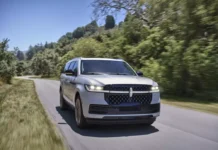

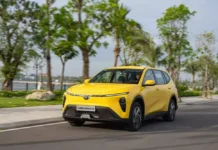


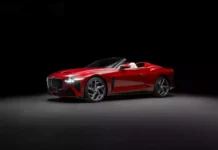



















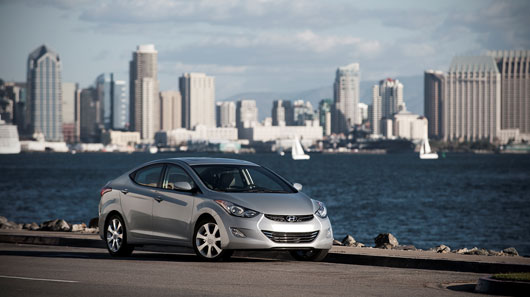
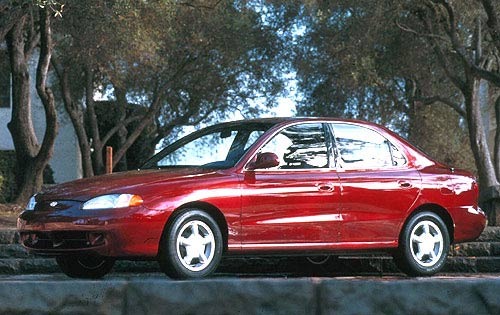
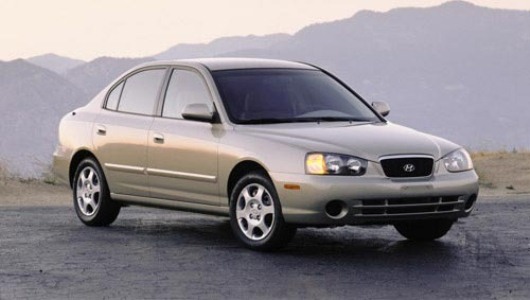
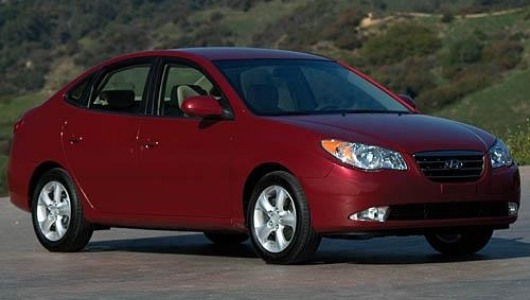
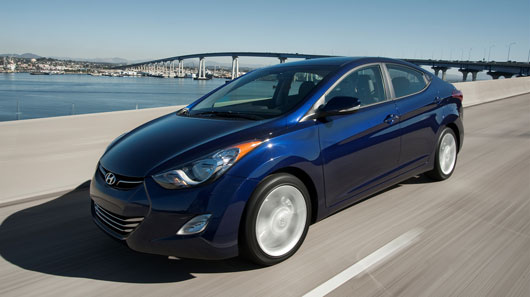
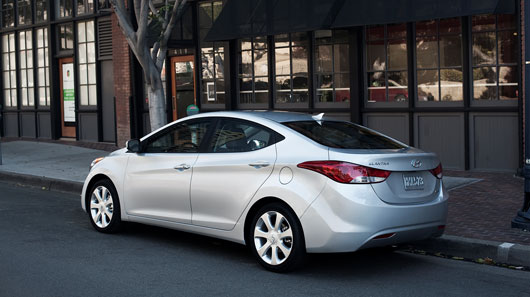
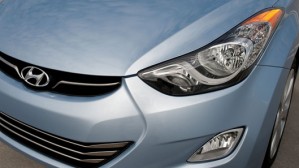
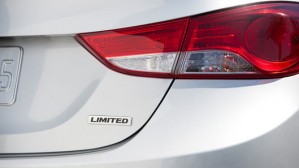
![[CAR REVIEW] Hyundai Elantra 2022 N-line: Unleashing the Korean Racing Spirit](https://vnauto.net/wp-content/uploads/2023/10/Xehay-HyundaiElantranline-19102022-22-150x150.jpg)


